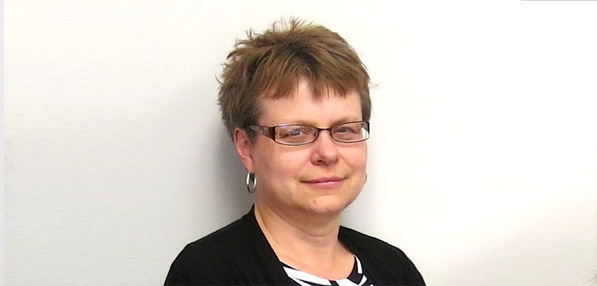The ‘Perfect Marriage’: how document imaging enables electronic records
Paper is a fact of life.
Even once everyone is using the new integrated clinical information system, currently being developed as part of the Clinical & Systems Transformation project, we will be ‘paper-light’, not paperless. Some clinical documentation (such as Code Blue documents) will still be on paper; and paper documents will continue to arrive from outside our three Health Organizations. That’s where document imaging, or scanning, comes in.
“The imaged record marries up with the electronic record so you don’t have a hybrid record,” explains Sylvia Melnyk, manager of CST’s Health Information Management/Document Imaging Team. “It’s called ‘the perfect marriage’, and is considered best practice for health information management. Ultimately, this means clinicians can just go to one place to find the information they need.
“The model includes scanning all clinical documentation received in paper format and some non-clinical documentation, for example third party requests for patient information.”
Document imaging will be done centrally by the Health Information Management department for inpatient, daycare and emergency records, with documents from ambulatory settings being scanned at the point of service. Records from residential sites and existing, historical paper records will not be scanned as part of this project.
To make paper documentation easier to manage, the team is also working on forms management.
“You will be able to print an internal paper-based document with barcodes already on it, so that when the patient is discharged and the form needs to be scanned, the barcode is already there,” clarifies Sylvia. “This means we won’t have to manually process the documents and add the barcodes afterwards. Barcodes are important because they identify patient information and document type, which determines where a document will be housed in the system.”
Document imaging has clear benefits for patient care and reduces costs for storage and retrieval of records. “We’re re-engineering our business processes to reduce storage and decrease response times to requests for information,” confirms Sylvia.
Background information
• Clinical & Systems Transformation (CST) is a joint initiative of VCH, PHSA and PHC, and one of the largest and most complex healthcare projects in Canada. It spans across several areas of the continuum of care including: acute care inpatient and outpatient units and ambulatory care. As well as creating consistent, leading practices, and a shared clinical information system, CST will deliver HIMSS Level 5 functionality.
• Clinical design teams, made up of hundreds of highly-skilled, multi-disciplinary professionals from across the three Health Organizations and Team IBM (experts from IBM Technical Services, Deloitte, Leidos Solution Builders, and the University of Pittsburgh Medical Centre), started work on April 7, 2014. These teams are tasked with designing our future workflows, based on leading practices. In doing so they are defining the requirements for our new clinical information system.
Visit CSTproject.ca for more information and regular updates, and to submit suggestions for future articles. If you have questions or feedback, please email info@CSTproject.ca or contact Kelle Payne, CST Executive Director and Transformation Lead (Joint), VCH at Kelle.Payne@vch.ca or Donna Stanton, CST Executive Director and Transformation Lead (Joint), VCH at Donna.Stanton@vch.ca.

